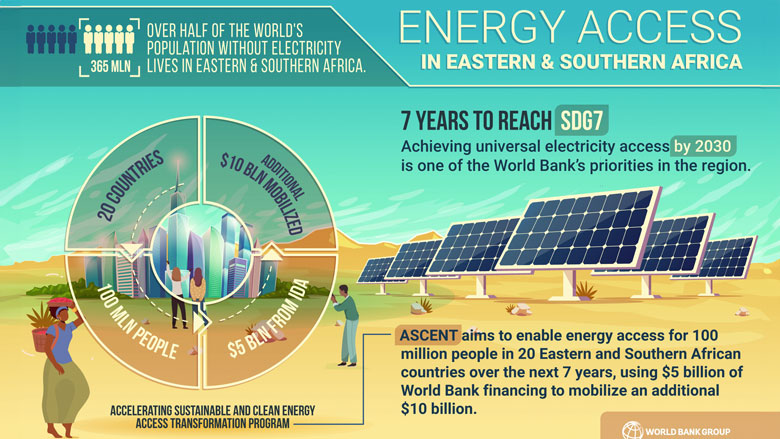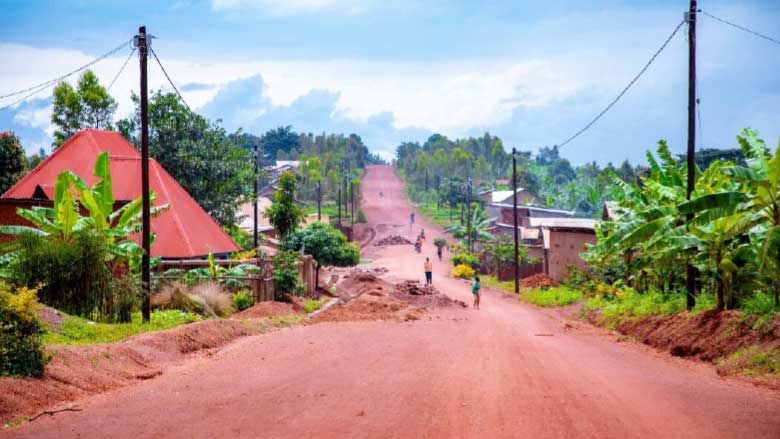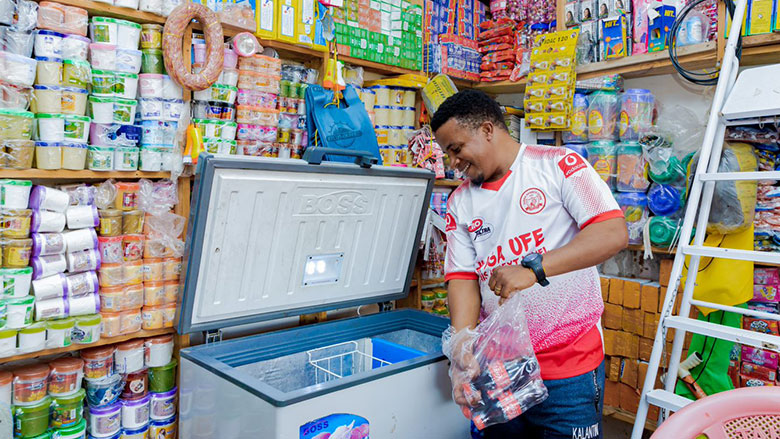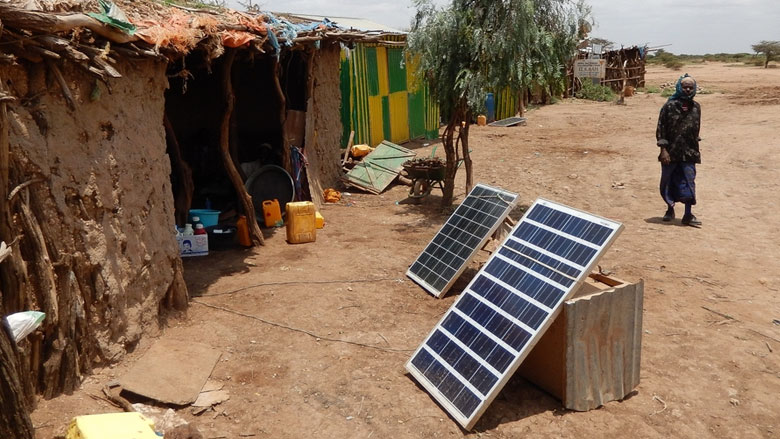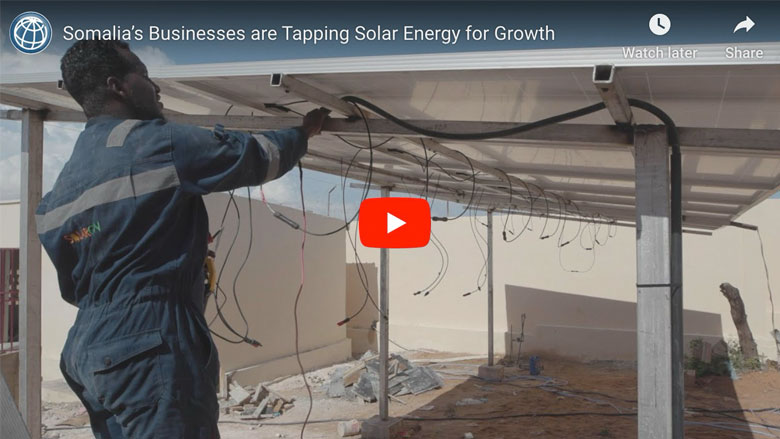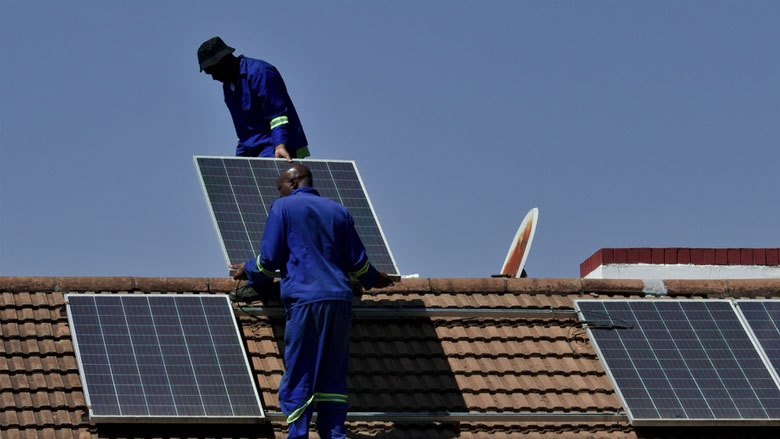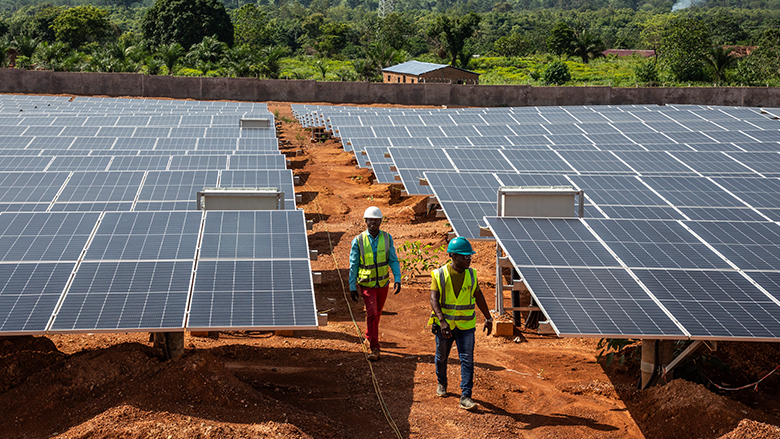Achieving universal electricity access by 2030 is the World Bank’s priority for the AFE region.
The depth of the challenge requires faster and coordinated action on an exponential scale, which is why we have launched the Accelerating Sustainable and Clean Energy Access Transformation (ASCENT) Program, a multi-year, multi-billion-dollar program that will provide a platform for governments, development partners, and private sector to work together more effectively.
ASCENT is expected to provide life-transforming opportunities for 100 million people across 20 countries in Eastern and Southern Africa, placing the region on the path to universal energy access. It will align the comparative advantage of all parts of the World Bank (IDA, IFC, MIGA) and build on the proposed IDA funding envelope of $5 billion to leverage an additional $10 billion from public and private financing through strategic partnerships. ASCENT’s programmatic approach will allow the World Bank to dedicate significant resources over a longer time horizon (seven years) and to provide a platform across both national and regional levels that will offer opportunities for collaboration with development partners and a focus on unlocking private capital. It is an example of how our institutions are pushing a paradigm shift towards more ambitious initiatives that can be replicated and scaled.
The ASCENT program is part of a series of scaled up initiatives that are supporting countries in Eastern and Southern Africa to accelerate their energy access. This includes the Distributed Access through Renewable Energy Scale-Up Platform (DARES), which is leveraging World Bank, MIGA, and IFC expertise to develop innovative financial and de-risking instruments that are helping governments and the private sector to expand DRE investment. It also includes Electrifying Africa, a large, multi-year programmatic technical assistance facility funded by the World Bank Energy Sector Management Assistance Program (ESMAP) to assist countries to help them address the key challenges that are slowing progress on clean energy access by collecting and disseminating data, sharing knowledge, providing targeted technical assistance and capacity building, and through convening and collaboration.
ASCENT’s focus is on delivering the downstream part of energy access, notably grid and DRE connections and access to clean cooking technologies and fuels – reliable, sustainable and affordable access also requires investments in generation and transmission. In parallel, the Bank is developing the Regional Energy Transmission, Trade, and Decarbonization (RETRADE) platform to address the challenges of regional energy integration to achieve energy security, affordability, and access.
Energy must stop being the binding constraint and become an engine of green, resilient and inclusive development that can unlock job creation, ensure food security and climate resilience, enable a digital transformation, and contribute to delivering critical education and health services.
The World Bank invites all stakeholders to join this fight against energy poverty because together, we can achieve universal access to affordable, reliable, and modern energy services in Eastern and Southern Africa by 2030.
